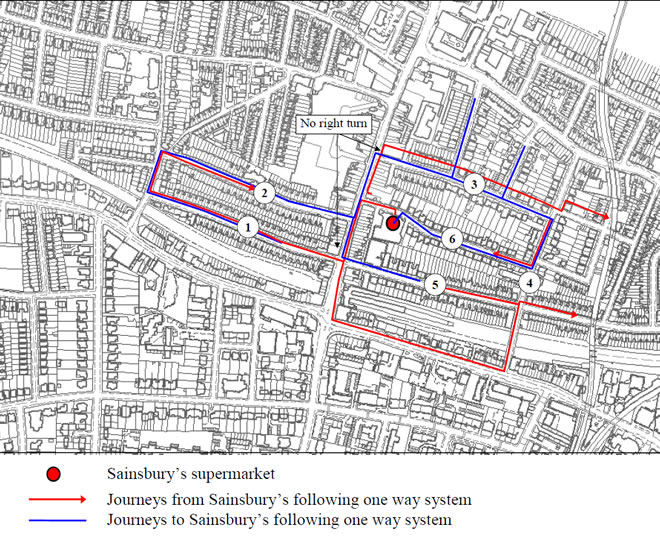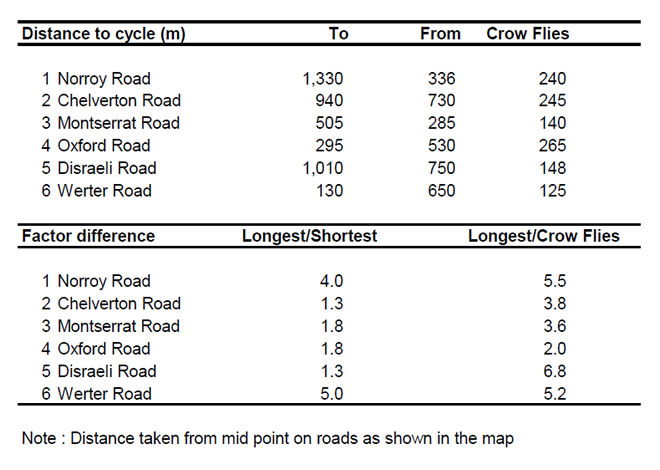Reasoning it would encourage more people to cycle - a more sustainable means of transport
|
In a letter to Councillor Cook the Putney Society has lobbied for five local one way streets to allow two way cycling.
"
Some London boroughs have introduced two way cycling on one way streets by simply
erecting signs stating that access is one way except for cyclists. The Putney Society strongly
suggests that Wandsworth do the same starting with the streets in the immediate vicinity of
Putney High Street, in particular the one way streets of :-
· Norroy Road,
· Chelverton Road,
· Montserrat Road,
· Werter Road and
· Disraeli Road."
 The Society has provided maps and statistics supporting their arguement:
The Society has provided maps and statistics supporting their arguement:
"The plan below shows the degree of inconvenience experienced by cyclists living in
proximity to the High Street. Taking Sainsbury’s store on Werter Road as a typical daily
destination, the plan illustrates that the one way system on the above mentioned roads
involves lengthy detours for cyclists. The blue lines illustrate the outward journeys to the
store from locations in the vicinity while the red lines show the return journeys."
The table below the map estimates the distance of these journeys and shows that in some cases the outward and return journeys differ by a factor of up to 5. The table also compares the longest cycling journey with a “crow flies” distance and reveals that in the case of Disraeli Road the former may exceed the latter by a factor close to 7.

 The driving community often complain that cycling in the wrong direction on one way
The driving community often complain that cycling in the wrong direction on one way
streets is dangerous and that all road users should conform to same traffic directions. The Society disputes this stating:
"* Cycling into oncoming traffic allows cyclists to see and react to potential hazards, more
so than is the case with traffic approaching from the rear.
* One way systems are designed for the convenience and safety of vehicle drivers, often
because the volume of traffic exceeds the capacity of the road, and/or junctions, or the
width of the road is constrained by parked cars. If more people cycled instead of driving,
and there were fewer cars, the need for one way systems might no longer be necessary.
On this understanding there is no justifiable reason why cyclists should suffer the same
restrictions to movement as the problem is not of their making."
September 27, 2013